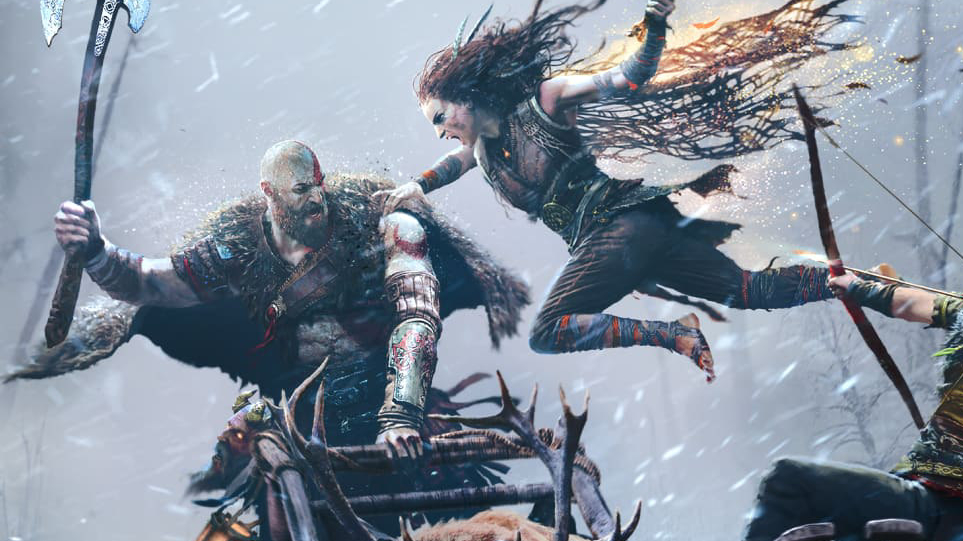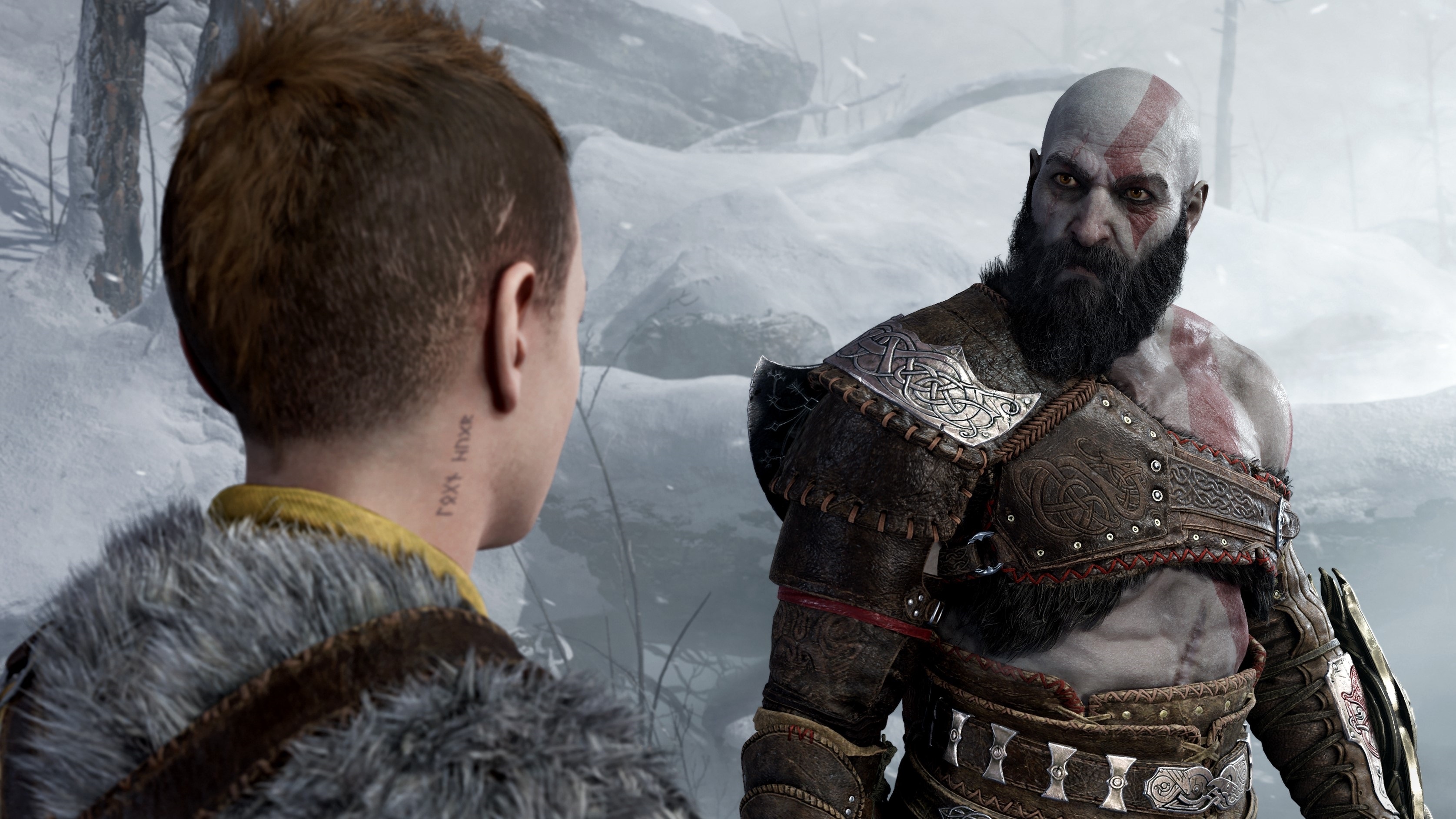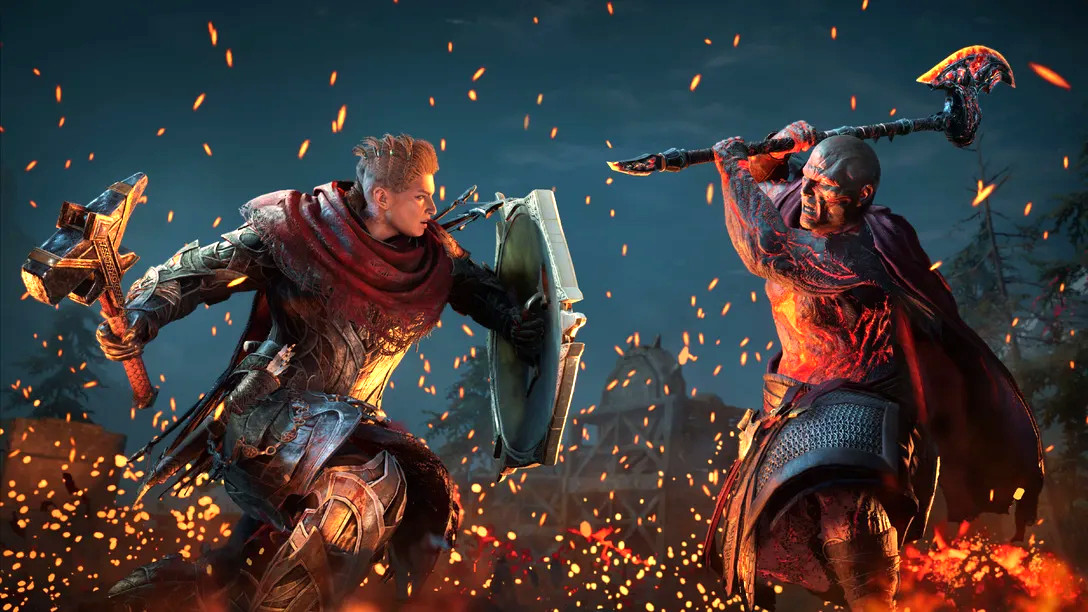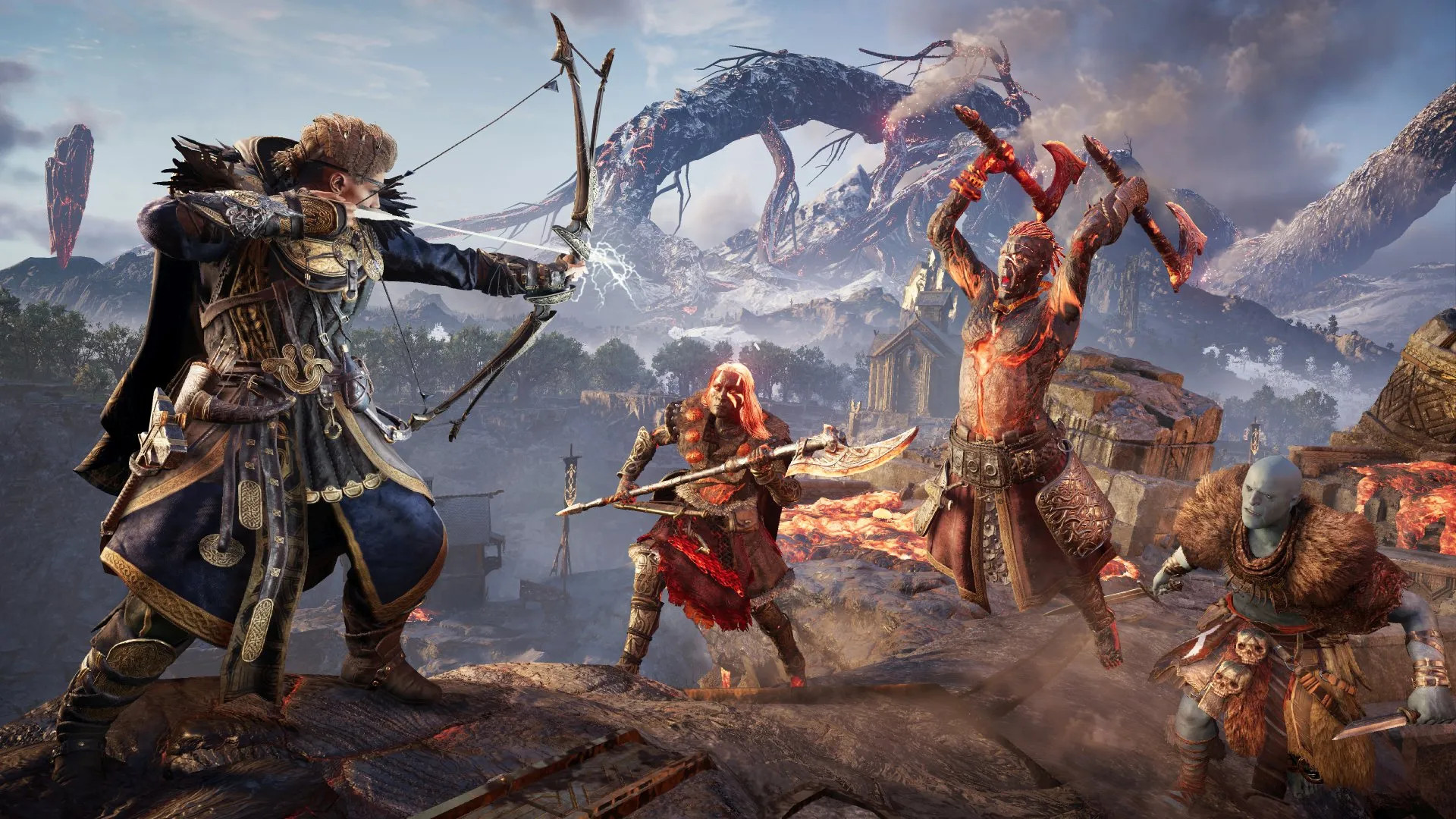Why God of War and Assassin's Creed both turned to a 'horrible and violent' myth
Flogging a dead Norse?

“Ragnarök defines the Norse mythic cosmos as one that doesn't just have a beginning, but an end,” Dr Jackson Crawford, a scholar of Old Norse, says, explaining why the story appears in so many games. “All meaningful time for the living will end, and the end will be horrible and violent.”
According to Viking storytellers, when the end times come, stars will vanish from the sky, floods will swallow the earth, and the heavens will burn. After the world wilts from an enduringly harsh winter, giants will invade the realm of Asgard as human civilization is plunged into chaos. Odin will be swallowed by the wolf Fenrir, while Thor and the World Serpent Jörmungandr end each other’s lives in battle. Its destruction is total, marking not only the climax of creation but its final resting place.
Ragnarök has found its way into Assassin’s Creed, Viking RTS Northgard, Senua’s Sacrifice, and many other games. God of War: Ragnarök will become only the latest to take us through the Twilight of the Gods when it releases next month. By now the ground is well-trodden, the story retold in a hundred different ways. Still, strangely, game developers are compelled to return to it and put their brand on the myth.
Roots of the World Tree

“It’s a well-shaped myth”, Dr Carolyne Larrington, a tutorial fellow in medieval English language and literature at Oxford University, says. “From the first inklings of disaster with the death of Baldr, the punishment of Loki, the onset of the Great Winter, chaos breaking out across the human world, and then the attack of the frost- and fire-giants.
“It speaks to our fear of annihilation, whether through the destruction of the environment, nuclear weapons or cosmic disaster. The inevitability is on the one hand depressing, but on the other, the courage of men and gods in the face of doom is inspiring. It is important to allow for hope of rebirth, and a better kind of existence in the new world.”
Ragnarök speaks to our fear of annihilation, whether through the destruction of the environment, nuclear weapons or cosmic disaster.
Dr Carolyne Larrington
The lead writer of Assassin’s Creed Valhalla: Dawn of Ragnarök, Alex Harakis, agrees. He says the team at Ubisoft Sofia was drawn to the myth because it’s “a story of hope rising from the ashes of defeat”. It has a universal appeal that crosses time and place, but is also a natural point of departure for storytellers studying Norse tales. From our modern, fragmented knowledge of Viking myth, two events overshadow all else: the Norse creation myth and end times. Between them, one is the more obvious candidate for adaptation.
“The creation myth is fascinating but quite surreal,” Harakis says. “Plus, it's somewhat disconnected from everything else, although we do make several references to it in Dawn of Ragnarök. The end times myth, by comparison, represented the best fit for us – narratively speaking it is contained yet epic, it connects with the sagas that come before, and it’s the culmination of Odin’s personal character arc. There was the added advantage that Assassin’s Creed Valhalla had already flirted with the subject without answering every last question.”
Get daily insight, inspiration and deals in your inbox
Sign up for breaking news, reviews, opinion, top tech deals, and more.
Spun by Norns

Yet, the myth’s framework leaves a lot of room for interpretation. “Like all Norse myths, the Ragnarök myth isn't recounted in the Old Norse sources in the kind of detail we as a modern audience would like,” Crawford says. The most expansive account is given by Icelandic historian Snorri Sturluson in the Prose Edda – a 13th-century handbook to Norse mythology – which is itself based on The Seeress’s Prophecy found in the even older Poetic Edda. Its roots go as far back as Iceland’s pre-Christian oral literary traditions, lending it an ambiguity that’s useful to modern storytellers.
Harakis and his team of narrative designers could tweak the myth's finer details to thread them into Assassin’s Creed’s existing lore. Mythical events are reinterpreted as literal global disasters, and the central battle between gods and giants is stripped of its mysticism to fit the game’s wider sci-fi narrative.
“One of the ways we reinterpreted the mythological fragments in our story was by reordering, or even cutting, parts of the timeline described in the myths,” Harakis says. “For example, the exact order of the harbingers leading to Ragnarök, along with the way events began to unfold once it occurred. This allowed us to streamline our story and enhance its dramatic impact.”
The Ragnarök myth isn't recounted in the Old Norse sources in the kind of detail we as a modern audience would like
Dr Jackson Crawford
Even our fractured understanding of Ragnarök gives storytellers useful anchor points from which to hang a coherent plot. But it’s the breadth and scale of those fragments that make them so rich a creative source. Touching on a variety of factions and inhabitants of the Norse realms, Ragnarök stands out as not only the best-known Norse myth but arguably the most ambitious.
Northgard developer Shiro Games tells TechRadar Gaming the story’s abundant narrative opportunities made it an obvious choice of setting for the strategy game’s first update. Fire giants, spectral warriors, and other creatures of the myth were introduced as fresh unit types, a new biome was included to reflect the charred landscape of the world-that-was, and exploding volcanoes were added as mortal interpretations of the gods’ fighting – the myth’s deep well of lore offering the perfect backdrop to a new game mode.
Fatal forecast

Video game developers aren’t alone in their fondness of the myth. You need only look to Marvel’s Thor: Ragnarök or the many historical fiction novels that riff on the legend to understand its prevalence in contemporary stories of Norse mythology. Go further back, and you’ll come to J. R. R. Tolkien’s take on the Poetic Edda in The Legend of Sigurd and Gudrún, and hop a few more decades to find Richard Wagner’s 19th-century Ragnarök-inspired musical drama Götterdämmerung.
“People have a taste for climactic endings,” Crawford says. “The notion of a culture who foresaw, not the everlasting reign of their gods, but the defeat of those gods in a terrible battle with monsters is cinematic. And arguably has a meaningful message for understanding the pessimistic tone that runs through so much of Norse literature otherwise.”
It’s particularly relevant now as we face the climate emergency; the world as we know it really will be destroyed in our grandchildren’s lifetimes
Dr Carolyne Larrington
The calamitous scale of Ragnarök, along with the hopeful thread of rebirth that underpins it, seems painfully pertinent in light of the last few years. “If you read the newspapers, it sometimes feels as if every day brings the threat of a new ‘Ragnarök’, and yet we survive and persevere,” Harakis says.
“It’s particularly relevant now as we face the climate emergency; the world as we know it really will be destroyed in our grandchildren’s lifetimes,” Larrington says. “And it’s important that in The Seeress’s Prophecy, the world will be born again fresh and new, and Baldr the slain god will return.
“In Ragnarök, the world ends in ice and fire, while here it will be fire and flood. Humans are terrified and don’t know what to do, while the Einherjar (the dead of Valhalla) can’t prevail. That’s where we are, running about in the face of disaster, not knowing what to do.
“The gods know it’s all too late and the forces they have built up can only make a brave show. Maybe for us, it’s not too late, and Surtr – the leader of the fire giants – with his flaming sword that splits the heavens won’t come for us. But like Odin, I fear that Ragnarök can be delayed, but it will come.”

Callum is TechRadar Gaming’s News Writer. You’ll find him whipping up stories about all the latest happenings in the gaming world, as well as penning the odd feature and review. Before coming to TechRadar, he wrote freelance for various sites, including Clash, The Telegraph, and Gamesindustry.biz, and worked as a Staff Writer at Wargamer. Strategy games and RPGs are his bread and butter, but he’ll eat anything that spins a captivating narrative. He also loves tabletop games, and will happily chew your ear off about TTRPGs and board games.